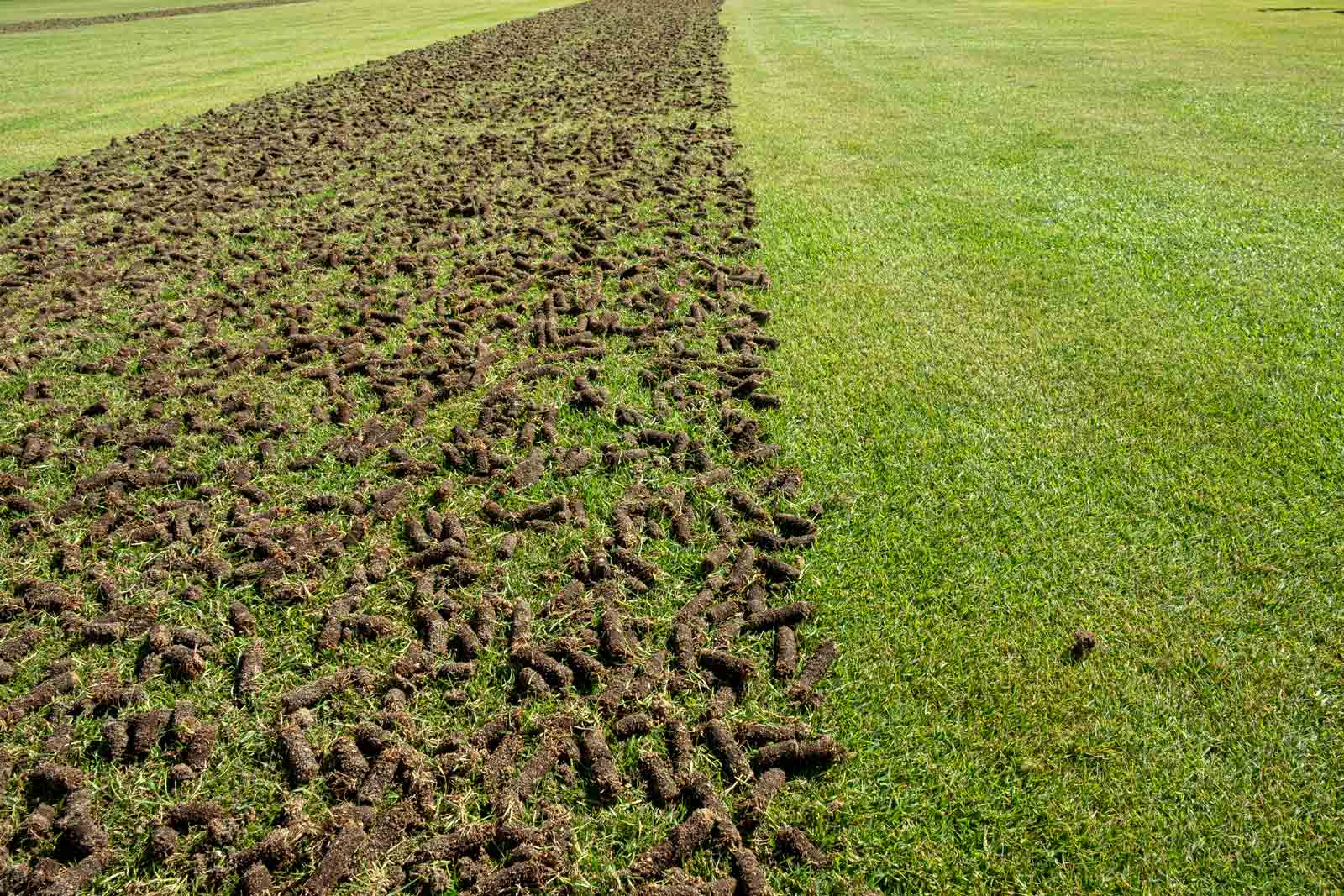
If your lawn looks tired, thin, or struggles to absorb water, the problem isn’t your grass—it’s your soil. Over time, soil becomes compacted from foot traffic, rain, and even mowing. This prevents oxygen, nutrients, and water from reaching the roots.
That’s where core aeration comes in. It’s one of the most powerful ways to rejuvenate your lawn and promote stronger, healthier growth year after year.
1. What Is Core Aeration?
Core aeration is the process of removing small plugs of soil from your lawn using a specialized machine. These holes allow air, water, and nutrients to reach the root zone more effectively.
Unlike spike aeration, which merely pokes the ground, core aeration actually relieves soil compaction—creating lasting results that help your lawn breathe and thrive.
2. Why Compaction Hurts Lawn Health
Compacted soil restricts root growth and limits your grass’s ability to absorb essential nutrients. Over time, this leads to:
- Thinning grass
- Water runoff instead of absorption
- Yellow or brown patches
- Increased weed and disease problems
Core aeration breaks this cycle by loosening the soil and creating channels that help everything your lawn needs flow freely to the roots.
3. The Benefits of Core Aeration
A single aeration treatment can dramatically transform your lawn’s health and appearance.
Key benefits include:
✅ Improved Root Growth – Aeration creates space for roots to expand deeper into the soil, resulting in stronger, more drought-resistant grass.
✅ Better Nutrient Absorption – Fertilizers and water reach the root system more efficiently.
✅ Reduced Thatch Buildup – It breaks down the thick layer of organic matter that can smother grass.
✅ Enhanced Water Retention – Water penetrates evenly, reducing runoff and pooling.
✅ Thicker, Greener Turf – Over time, grass grows denser and more vibrant thanks to improved oxygen circulation.
4. When Should You Aerate Your Lawn?
Timing is crucial for maximum benefit. In Texas, the best time for aeration depends on your grass type:
- Warm-season lawns (Bermuda, Zoysia, St. Augustine): Late spring through summer
- Cool-season lawns (Fescue, Rye): Early fall
Aerating during active growth ensures the grass recovers quickly and fills in the small holes left behind.
5. Combine Aeration with Overseeding and Fertilization
For the best results, pair aeration with overseeding and fertilization. The open soil pockets give new seeds the perfect place to germinate and fertilizer a direct path to the roots.
Professional lawn care companies like Anointed Lawn Care use aeration as part of a complete turf health program, ensuring your yard stays lush, green, and resilient all year long.
6. How Often Should You Aerate?
Most lawns benefit from aeration once a year, especially if they experience heavy traffic or clay-based soil. However, severely compacted lawns may require twice-yearly treatments to fully restore balance and airflow.
7. Signs Your Lawn Needs Aeration
Not sure if it’s time? Watch for these indicators:
- Water pools or runs off quickly after rain
- Grass thins despite regular watering and fertilization
- Soil feels hard to the touch
- You notice excessive thatch buildup
If you’re seeing any of these symptoms, your lawn likely needs aeration soon.
8. Professional Aeration vs. DIY
While homeowners can rent aerators, professional services ensure proper depth, spacing, and timing. Anointed Lawn Care’s trained technicians use commercial-grade equipment to achieve consistent results and integrate aeration with other seasonal treatments for long-term success.

Core aeration is the foundation of a healthy, thriving lawn. By opening up compacted soil, it restores airflow, improves root strength, and enhances every other aspect of your lawn care routine.
Ready to revitalize your yard? Contact Anointed Lawn Care today for professional core aeration and start growing greener, stronger grass.









